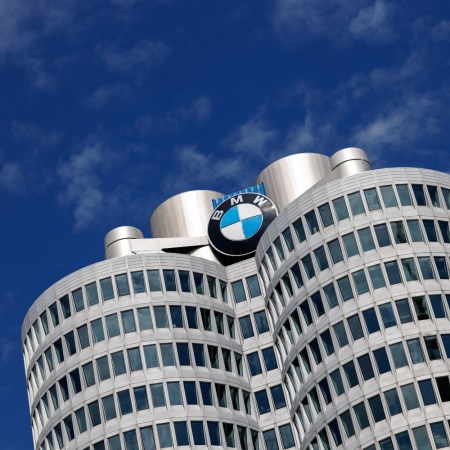Not so long ago, the world’s fastest sailing vessels actually sailed. Like, on the water. The way boats do. But things have changed in 2016. Now, they fly. It’s called “foiling.”
Over the past decade, yacht racing has undergone one of the greatest technological advancements in the history of sports. Before the introduction of hydrofoil racers in the America’s Cup (the qualifying series for which passes through Chicago this weekend), the boats ran at about 17-20 knots. The new breed — twin-hull catamarans that breach the water on carbon foils — can reach speeds of up to 50.
That’s a verifiable gamechanger … and one BMW had a serious hand in. When Larry Ellison approached the German automaker to help design the racers for his Oracle Team USA, they happily accepted. By applying the logistics of racecars to raceboats, Oracle has their sights set on taking home a third straight trophy next year in Bermuda.
“Everything above the surface of the water can be optimized exactly the same way as we do with our cars,” says Holger Gau, who works for BMW’s 3D-simulation division. “We look at turbulence, we look at wakes and we try to minimise resistance by modifying shapes.”
His theories are put to the test at the BMW Group Research and Innovation Center (FIZ) in Munich, where massive computers and one of the largest wind tunnels on earth (read: gust of up to 100km/hr) team up to simulate and gather data on performance in extreme conditions. “The BMW Group is very well equipped on the virtual side,” says Gau. “Different software tools allow us to assess the aerodynamic qualities of the boat and to optimize them virtually. The testing and fine-tuning then takes place in the wind tunnel.”
From there, it’s a question of figuring out which parts of the boat can be improved — not just in terms of engineering, but also legality: in the America’s Cup, large swaths of the boat platform (including everything above the hulls) are heavily regulated. So when it comes to optimization, designers have to get creative. One area ripe for innovation is the connection of the cross beams to the hulls.
“On the aerodynamics side, BMW has an excellent knowledge of how exactly to improve these detailed modifications to the connection points,” explains Gau. “Furthermore, we BMW engineers have an extraordinary wealth of experience in designing prototypes from the automobile sector. That helps enormously during development, as we know the answers to questions in this area: How do you connect such parts? How can you measure the differences?”
The aerodynamics at the FIZ are also a great testing ground for cockpit dynamics (i.e., where and how the teammates position themselves along the boat), ensuring that bodies in motion generate as little drag as possible. “We want to find out the ideal positions when performing various maneuvers. Must the sailors position themselves in each other’s slipstream? Must they sit lower in the hull? Do we need something upstream, like the windscreen on a motorcycle, to minimise the crew’s aerodynamic drag?” says Gau.
BMW’s influence, then, has not just been mechanical, but also practical. Their technology has not only yielded superior boat design, but a superior understanding of sailing technique. “We use our methods to provide input on the places where there is still room for improvement,” Gau continues. “After that we head to the wind tunnel. We can, for example, test the crew positions with various superstructures. In the tunnel, we develop potential improvements, which we then test virtually on the complete model.
The result: a supercharged yacht manned with supercharged sailors primed to claim the greatest prize on the seven seas — all thanks to a company more at home on terra firma.
This article appeared in an InsideHook newsletter. Sign up for free to get more on travel, wellness, style, drinking, and culture.




















